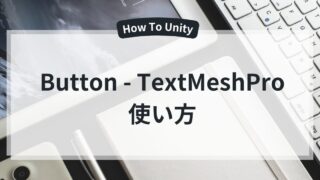この記事について
本記事ではUnityでのバイナリ保存を解説します。
かつて利用されていた BinaryFormatter はセキュリティ上の理由から非推奨となっており、現在は BinaryWriter / BinaryReader を用いたシンプルな方法がよく使われています。
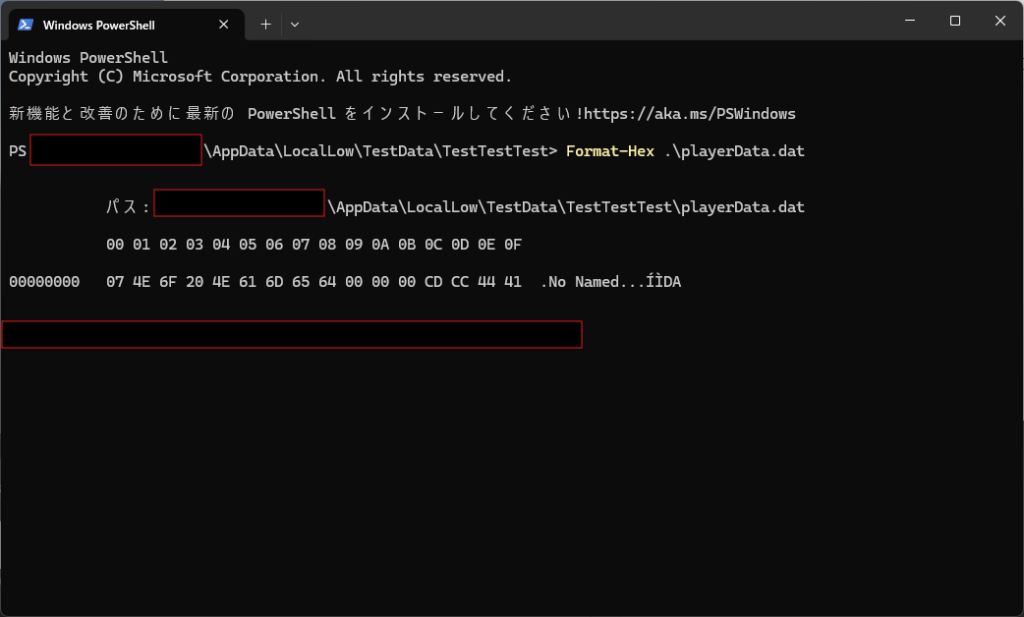
この記事でわかること
- バイナリ保存の基本と実装方法(BinaryWriter / BinaryReader)
- データクラスを定義して保存・読み込みする方法
- 保存データの確認方法(Format-Hex など)
- 不要なデータの削除方法
データの保存とは?
Unityで使用できるデータの保存方法は複数あります。以下のサイトを参考にして下さい。
Binary(バイナリ)保存とは?
バイナリ保存とは、データを 0と1のバイト列として直接ファイルに書き込む方法 です。
UnityではBinaryWriterを使って文字列や数値をそのままバイナリ形式で保存し、BinaryReaderを使って同じ順序で読み込むことができます。
JSONのように人間が読めるテキスト形式ではなく、メモ帳で開くと文字化けして内容が確認できません。
そのため改ざんされにくく効率的であり、ゲームのセーブデータや内部的に扱う設定値などに利用されます。
Binary(バイナリ)でデータを扱う
Binary(バイナリ)の準備
まずはヒエラルキーで右クリックをして空のGameObjectを1つ用意します。
・「右クリック」→「Create Empty」
次にスクリプトを作成して先ほどのCreate Emptyにアタッチしてください。
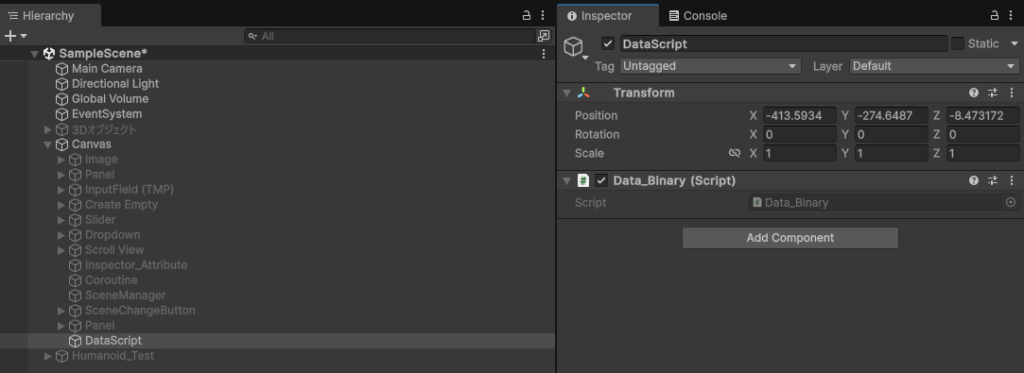
データクラスの作成
まずはシリアライズ対象のクラスを [System.Serializable] で定義します。
※Jsonで保存するため構造体にします。
[System.Serializable]
public class Player_Data
{
public string Name;
public int Level;
public float Score;
}データを保存する(BinaryWriter)
保存は「BinaryWriter」を用いて保存をしていきます。
using System.IO;
using System.Text;
using UnityEngine;
[System.Serializable]
public class Player_Data
{
public string Name;
public int Level;
public float Score;
}
public class Data_Binary : MonoBehaviour
{
private string filePath;
void Start()
{
filePath = Path.Combine(Application.persistentDataPath, "playerData.dat");
Player_Data data = new Player_Data();
data.Name = "No Name";
data.Level = 100;
data.Score = 12.3f;
// バイナリ保存
BinarySaveManager.Save(data, filePath);
}
}
// バイナリ保存・読み込みをまとめたクラス
public static class BinarySaveManager
{
// 保存処理
public static void Save(Player_Data data, string filePath)
{
using (BinaryWriter writer = new BinaryWriter(File.Open(filePath, FileMode.Create)))
{
writer.Write(data.Name);
writer.Write(data.Level);
writer.Write(data.Score);
}
}
// 読み込み処理
public static Player_Data Load(string filePath)
{
if (!File.Exists(filePath))
{
Debug.LogWarning("セーブデータが存在しません: " + filePath);
return null;
}
Player_Data data = new Player_Data();
using (BinaryReader reader = new BinaryReader(File.Open(filePath, FileMode.Open)))
{
data.Name = reader.ReadString();
data.Level = reader.ReadInt32();
data.Score = reader.ReadSingle();
}
return data;
}
}実行してみる際にバイナリはメモ帳では見えないので保存場所でPower Shellを開き、コマンドで確認します。
コマンド : Format-Hex .\playerData.dat
バイナリの読み方を投稿者は知りませんが、バイナリっぽいものが出てますね。

データを読み込む(ReadAllBytes + FromJson)
次は先ほど保存したバイナリデータを読み込みます。読み込みは「」
using System.IO;
using System.Text;
using UnityEngine;
[System.Serializable]
public class Player_Data
{
public string Name;
public int Level;
public float Score;
}
public class Data_Binary : MonoBehaviour
{
private string filePath;
void Start()
{
filePath = Path.Combine(Application.persistentDataPath, "playerData.dat");
Player_Data data = new Player_Data();
data = BinarySaveManager.Load(filePath);
Debug.Log("名前: " + data.Name);
Debug.Log("レベル: " + data.Level);
Debug.Log("スコア: " + data.Score);
}
}
// バイナリ保存・読み込みをまとめたクラス
public static class BinarySaveManager
{
// 保存処理
public static void Save(Player_Data data, string filePath)
{
using (BinaryWriter writer = new BinaryWriter(File.Open(filePath, FileMode.Create)))
{
writer.Write(data.Name);
writer.Write(data.Level);
writer.Write(data.Score);
}
}
// 読み込み処理
public static Player_Data Load(string filePath)
{
if (!File.Exists(filePath))
{
Debug.LogWarning("セーブデータが存在しません: " + filePath);
return null;
}
Player_Data data = new Player_Data();
using (BinaryReader reader = new BinaryReader(File.Open(filePath, FileMode.Open)))
{
data.Name = reader.ReadString();
data.Level = reader.ReadInt32();
data.Score = reader.ReadSingle();
}
return data;
}
}実行してみると、先ほどのよくわからないデータが読みこまれて見やすくなりましたね。
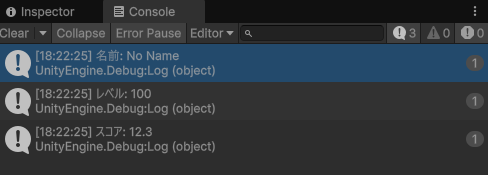
データを削除する
バイナリに限った話ではないですが、不要になったファイルはFile.Deleteで削除可能です。
using System.IO;
using System.Text;
using UnityEngine;
public class Data_Binary : MonoBehaviour
{
private string filePath;
void Start()
{
filePath = Path.Combine(Application.persistentDataPath, "playerData.dat");
if (File.Exists(filePath))
{
File.Delete(filePath);
Debug.Log("削除完了");
}
}
}実行してみると、playerData.datファイルが削除されましたね。
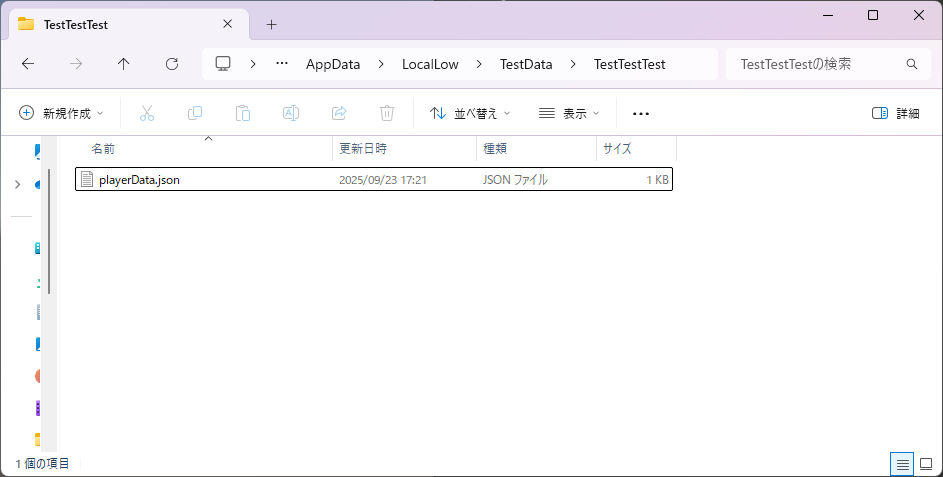
注意点
- BinaryFormatterは非推奨
かつてよく使われていましたが、セキュリティ上の脆弱性があるため現在は推奨されていません。 - 順序依存
BinaryWriter / BinaryReader は 書き込んだ順序通りに読み込む必要があります。
順序を変えたりデータ構造を変更すると、古いデータが読み込めなくなります。 - デバッグしにくい
JSONと違って中身が人間に読めないため、直接編集や確認が難しいです。確認する場合はPowerShellのFormat-Hexのバイナリエディタを使いましょう。 - 改ざん防止にはならない
バイナリ保存しても完全なセキュリティ対策にはなりません。重要なデータは暗号化(AESなど)やサーバー側での検証が必要です。
まとめ
- バイナリ保存は 高速かつ効率的 にデータを扱える
- 実装は BinaryWriter / BinaryReader を使うのがシンプル
- データの順序や型を変更すると互換性に問題が出やすいので注意
- 確認にはFormat-Hexコマンドやバイナリエディタを活用
- 小規模データや開発初期はJSON、効率や難読化を重視するならバイナリが適している
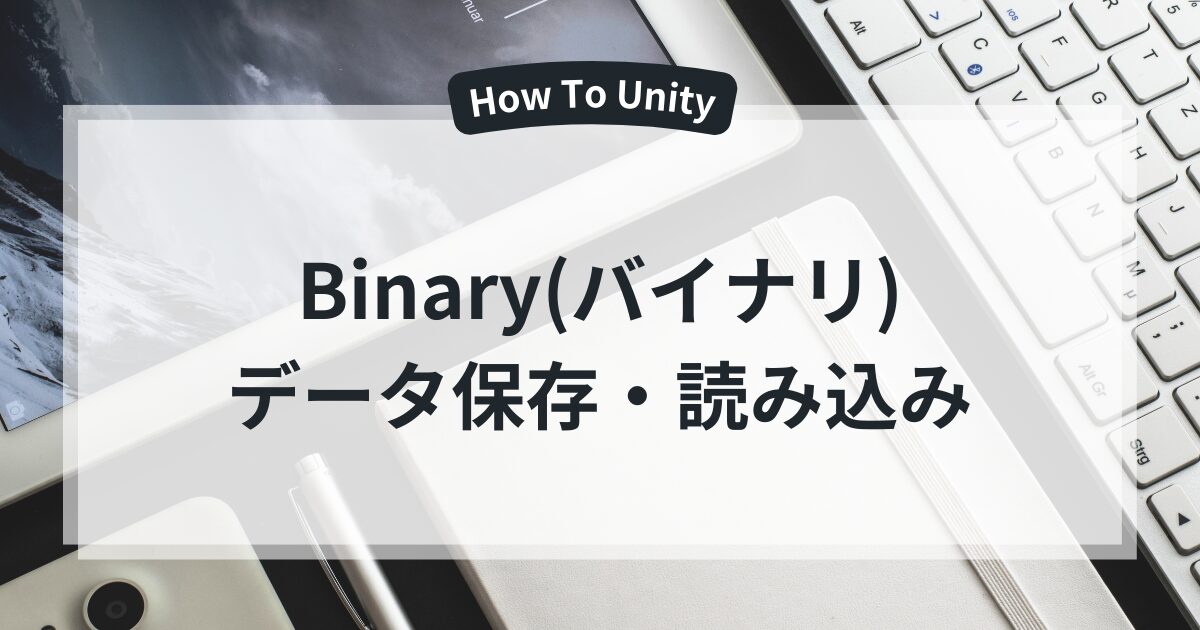




サイトアイコン-2-150x150.png)




